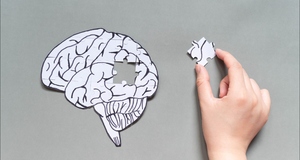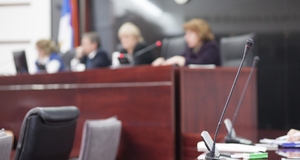Enhancing the Recall of Presented Material for Undergraduate Students
By
2009, Vol. 1 No. 12 | pg. 1/1
KEYWORDS:
In Enhancing the Recall of Presented Material, Larson (2009) examined the effects of different styles of note-taking and which ones seemed to benefit undergraduates when tested on the material they were expected to know. This study specifically focused on handouts given by the educators and the information that is on the handouts, the font-type used, and the colors of the font-type and the background of the handout itself. The hypotheses regarding the handouts themselves were questioning the effectiveness of having a handout that contained lines on the paper to write on versus handouts that have blank space for students to write on. Short-term recall seems to be increased when material on handouts has more room for notes but also includes skeletal information on the lesson being taught (Larson, 2009). If half the information of the lecture is given on the handout and the student takes notes during the lecture, information is committed more to memory than if the student took no notes or if the student had no other information from the lecture already provided. The next hypotheses deal with the font used on the handouts. Studies have shown that font-types that have serifs (any of the short lines stemming from and at an angle to the upper and lower ends of the strokes of a letter) tend to be committed more to memory than fonts that do not have the serifs. The theory is that when a font with serifs is used, information is held in the short-term memory easier (Larson, 2009).The third set of hypotheses has to do with color of font and background of the handouts given. Larson claims that positive type, black letters on a light background, will produce better short-term recall than using the reverse (Larson, 2009). This is the case regardless of whether the notes are taken on lined paper or on handouts. In order to test these hypotheses, Larson provided two typefaces (bold Times New Roman and bold Helvetica), two color types (positive and reverse), and three note-taking methods (no note-taking, notes on lined paper, and filling in outlines/handouts with blanks). These were varied between four lectures consisting on 7-12 slides and lasted about 8-10 minutes. After these lectures, four multiple choice questions were provided about the material lectured on, with five possible answers each. The handouts were made to match the slides used during the lecture (Larson, 2009). 179 students from one of the largest undergraduate business schools in the Midwest were part of this experiment. Some were volunteers to learn the material; others earned extra credit for participating. They were chosen at random to utilize the various note-taking methods and materials provided and which lecture to attend (Larson, 2009). These students were asked to fill out a questionnaire at the end of the end of the experiment so that the researchers would know a little about the study habits and personal reading habits of the participants. This information was used to determine whether this information played a part in a student’s ability to recall information short-term (Larson, 2009). This study found that the typeface and the colors chosen did not significantly affect short-term recall of the information provided in the lecture. However, the questionnaire did provide some insight as to whether the students’ mannerisms outside of the lecture made an impact on the results of being able to recall. It was found that students who read more in their spare time were able to recall better when tested. Gender was determined to be a non-significant factor (Larson, 2009). Larson concluded that active note-taking, regardless of the method used, did keep students engaged in the lesson but that the effects of the types of fonts used on handouts or the colors used for the handouts made little to no difference on the effects of short-term recall (Larson, 2009). However, the handouts themselves did help and that effective ways to use this information ought to be examined. According to Educational Psychology, Slavin (2009) defines short-term memory as the component of memory in which limited amounts of information can be stored in a few seconds. He also calls this working memory. His definition of short-term memory differs slightly than the one Larson uses, as Larson expects certain information to be committed to short-term memory after a time period of 8-10 minutes. Plus, Larson expected a lot more than the 5-9 things at a time Slavin theorized the average person can hold in his short-term memory. If one were to compare Larson’s (2009) work on short-term memory to Slavin’s (2009) definition, it seemed more like Larson was testing different ways to commit information on a more long-term scale. Larson tested the students on the material learned and based the results of the test on how they attempted to commit that information to memory. The students in the experiment were expected to recall more information than Slavin determined one could hold in their working memory and after note-taking, not simply staring at a group of information for a few seconds. Slavin does discuss note-taking and its effectiveness. Larson and Slavin agree that active note-taking engages the learner in the material being lectured on, as there is a mental process that occurs as a student determines what to write down as a note and what not to include. Slavin also agrees with Larson that partial outlines or handouts that a student can add his own notes to increases the effectiveness of the note-taking (Slavin, 2009). Larson uses different terminology to theorize about the materials learned in Educational Psychology but he does explore the effectiveness of note-taking as a method of committing information to memory. Slavin supports Larson’s findings, determining that while typeface and colors do not seem to make much of a difference in recalling information, writing down and paraphrasing information that is being lectured on and adding it to handouts that contain some of the information that a student is required to learn is an effective method of ensuring that a student does recall the material that an educator wants him to learn. ReferencesLarson, R. B. (2009). Enhancing the Recall of Presented Material. Computers & Education (53), 1278-1284. Slavin, R. E. (2009). Educational psychology. Upper Saddle River, NJ: Pearson Education. Suggested Reading from Inquiries Journal
Inquiries Journal provides undergraduate and graduate students around the world a platform for the wide dissemination of academic work over a range of core disciplines. Representing the work of students from hundreds of institutions around the globe, Inquiries Journal's large database of academic articles is completely free. Learn more | Blog | Submit Latest in Education |


















